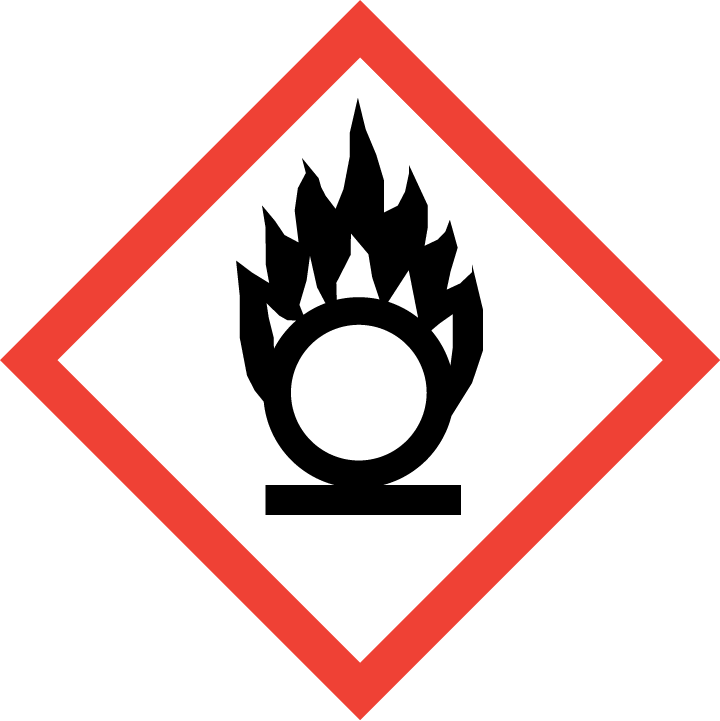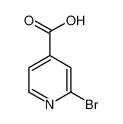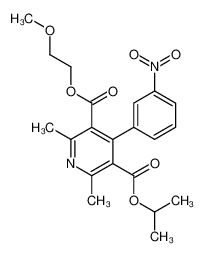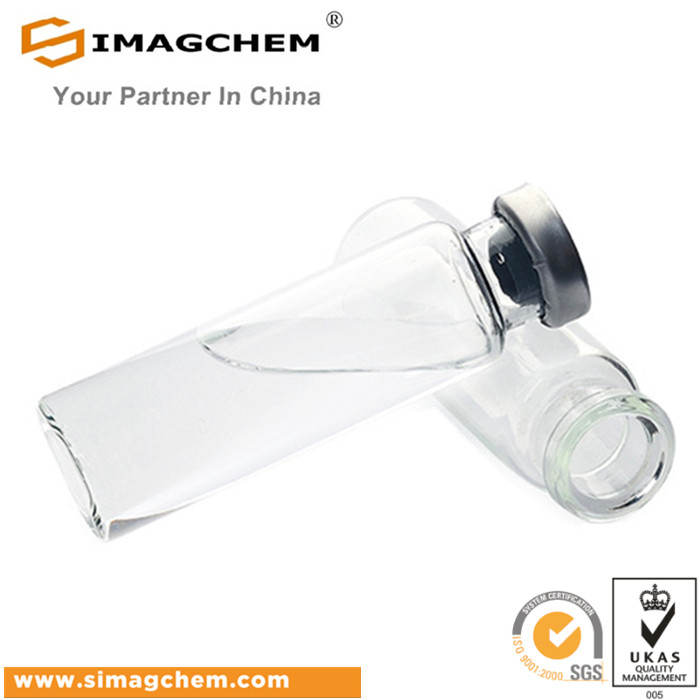1.Identification
1.1 GHS Product identifier
| Product name | chromium trioxide |
|---|
1.2 Other means of identification
| Product number | - |
|---|---|
| Other names | Chromic anhydride |
1.3 Recommended use of the chemical and restrictions on use
| Identified uses | For industry use only. Corrosion inhibitors and anti-scaling agents,Plating agents and surface treating agents,Processing aids, specific to petroleum production |
|---|---|
| Uses advised against | no data available |
1.4 Supplier's details
| Company | MOLBASE (Shanghai) Biotechnology Co., Ltd. |
|---|---|
| Address | Floor 4 & 5, Building 12, No. 1001 North Qinzhou Road, Xuhui District, Shanghai, China |
| Telephone | +86(21)64956998 |
| Fax | +86(21)54365166 |
1.5 Emergency phone number
| Emergency phone number | +86-400-6021-666 |
|---|---|
| Service hours | Monday to Friday, 9am-5pm (Standard time zone: UTC/GMT +8 hours). |
2.Hazard identification
2.1 Classification of the substance or mixture
Oxidizing solids, Category 1
Acute toxicity - Oral, Category 3
Acute toxicity - Dermal, Category 3
Skin corrosion, Category 1A
Skin sensitization, Category 1
Acute toxicity - Inhalation, Category 2
Respiratory sensitization, Category 1
Germ cell mutagenicity, Category 1B
Carcinogenicity, Category 1A
Specific target organ toxicity – repeated exposure, Category 1
Hazardous to the aquatic environment, short-term (Acute) - Category Acute 1
Hazardous to the aquatic environment, long-term (Chronic) - Category Chronic 1
Reproductive toxicity, Category 2
2.2 GHS label elements, including precautionary statements
| Pictogram(s) |      |
|---|---|
| Signal word | Danger |
| Hazard statement(s) | H271 May cause fire or explosion; strong oxidizer H301 Toxic if swallowed H311 Toxic in contact with skin H314 Causes severe skin burns and eye damage H317 May cause an allergic skin reaction H330 Fatal if inhaled H334 May cause allergy or asthma symptoms or breathing difficulties if inhaled H340 May cause genetic defects H350 May cause cancer H410 Very toxic to aquatic life with long lasting effects |
| Precautionary statement(s) | |
| Prevention | P210 Keep away from heat, hot surfaces, sparks, open flames and other ignition sources. No smoking. P220 Keep away from clothing and other combustible materials. P280 Wear protective gloves/protective clothing/eye protection/face protection. P283 Wear fire resistant or flame retardant clothing. P264 Wash ... thoroughly after handling. P270 Do not eat, drink or smoke when using this product. P260 Do not breathe dust/fume/gas/mist/vapours/spray. P261 Avoid breathing dust/fume/gas/mist/vapours/spray. P272 Contaminated work clothing should not be allowed out of the workplace. P271 Use only outdoors or in a well-ventilated area. P284 [In case of inadequate ventilation] wear respiratory protection. P201 Obtain special instructions before use. P202 Do not handle until all safety precautions have been read and understood. P273 Avoid release to the environment. |
| Response | P306+P360 IF ON CLOTHING: Rinse immediately contaminated clothing and skin with plenty of water before removing clothes. P371+P380+P375 In case of major fire and large quantities: Evacuate area. Fight fire remotely due to the risk of explosion. P370+P378 In case of fire: Use ... to extinguish. P301+P310 IF SWALLOWED: Immediately call a POISON CENTER/doctor/… P321 Specific treatment (see ... on this label). P330 Rinse mouth. P302+P352 IF ON SKIN: Wash with plenty of water/... P312 Call a POISON CENTER/doctor/…if you feel unwell. P361+P364 Take off immediately all contaminated clothing and wash it before reuse. P301+P330+P331 IF SWALLOWED: Rinse mouth. Do NOT induce vomiting. P303+P361+P353 IF ON SKIN (or hair): Take off immediately all contaminated clothing. Rinse skin with water [or shower]. P363 Wash contaminated clothing before reuse. P304+P340 IF INHALED: Remove person to fresh air and keep comfortable for breathing. P310 Immediately call a POISON CENTER/doctor/… P305+P351+P338 IF IN EYES: Rinse cautiously with water for several minutes. Remove contact lenses, if present and easy to do. Continue rinsing. P333+P313 If skin irritation or rash occurs: Get medical advice/attention. P362+P364 Take off contaminated clothing and wash it before reuse. P320 Specific treatment is urgent (see ... on this label). P342+P311 If experiencing respiratory symptoms: Call a POISON CENTER/doctor/... P308+P313 IF exposed or concerned: Get medical advice/ attention. P314 Get medical advice/attention if you feel unwell. P391 Collect spillage. |
| Storage | P420 Store separately. P405 Store locked up. P403+P233 Store in a well-ventilated place. Keep container tightly closed. |
| Disposal | P501 Dispose of contents/container to ... |
2.3 Other hazards which do not result in classification
none
3.Composition/information on ingredients
3.1 Substances
| Chemical name | Common names and synonyms | CAS number | EC number | Concentration |
|---|---|---|---|---|
| chromium trioxide | chromium trioxide | 1333-82-0 | none | 100% |
4.First-aid measures
4.1 Description of necessary first-aid measures
General advice
Consult a physician. Show this safety data sheet to the doctor in attendance.
If inhaled
Fresh air, rest. Half-upright position. Artificial respiration may be needed. Refer for medical attention.
In case of skin contact
Remove contaminated clothes. First rinse with plenty of water for at least 15 minutes, then remove contaminated clothes and rinse again. Refer for medical attention .
In case of eye contact
First rinse with plenty of water for several minutes (remove contact lenses if easily possible), then refer for medical attention.
If swallowed
Rinse mouth. Give one or two glasses of water to drink. Do NOT induce vomiting. Refer immediately for medical attention.
4.2 Most important symptoms/effects, acute and delayed
Very irritating to eyes and respiratory tract. Ingestion causes severe gastrointestinal symptoms. Contact with eyes or skin causes burns; prolonged contact produces dermatitis ("chrome sores"). (USCG, 1999)
4.3 Indication of immediate medical attention and special treatment needed, if necessary
Immediate first aid: Ensure that adequate decontamination has been carried out. If patient is not breathing, start artificial respiration, preferably with a demand valve resuscitator, bag-valve-mask device, or pocket mask, as trained. Perform CPR as necessary. Immediately flush contaminated eyes with gently flowing water. Do not induce vomiting. If vomiting occurs, lean patient forward or place on left side (head-down position, if possible) to maintain an open airway and prevent aspiration. Keep patient quiet and maintain normal body temperature. Obtain medical attention. /Inorganic Acids and Related Compounds/
5.Fire-fighting measures
5.1 Extinguishing media
Suitable extinguishing media
Suitable extinguishing media: Use water spray, alcohol-resistant foam, dry chemical or carbon dioxide.
5.2 Specific hazards arising from the chemical
Behavior in Fire: Containers may explode (USCG, 1999)
5.3 Special protective actions for fire-fighters
Wear self-contained breathing apparatus for firefighting if necessary.
6.Accidental release measures
6.1 Personal precautions, protective equipment and emergency procedures
Use personal protective equipment. Avoid dust formation. Avoid breathing vapours, mist or gas. Ensure adequate ventilation. Evacuate personnel to safe areas. Avoid breathing dust. For personal protection see section 8.
6.2 Environmental precautions
Personal protection: complete protective clothing including self-contained breathing apparatus. Do NOT let this chemical enter the environment. Sweep spilled substance into sealable containers. If appropriate, moisten first to prevent dusting. Carefully collect remainder. Then store and dispose of according to local regulations. Do NOT absorb in saw-dust or other combustible absorbents.
6.3 Methods and materials for containment and cleaning up
ACCIDENTAL RELEASE MEASURES: Personal precautions, protective equipment and emergency procedures: Wear respiratory protection. Avoid dust formation. Avoid breathing vapors, mist or gas. Ensure adequate ventilation. Evacuate personnel to safe areas. Avoid breathing dust; Environmental precautions: Prevent further leakage or spillage if safe to do so. Do not let product enter drains. Discharge into the environment must be avoided; Methods and materials for containment and cleaning up: Sweep up and shovel. Contain spillage, and then collect with an electrically protected vacuum cleaner or by wetbrushing and place in container for disposal according to local regulations. Keep in suitable, closed containers for disposal.
7.Handling and storage
7.1 Precautions for safe handling
Avoid contact with skin and eyes. Avoid formation of dust and aerosols. Avoid exposure - obtain special instructions before use.Provide appropriate exhaust ventilation at places where dust is formed. For precautions see section 2.2.
7.2 Conditions for safe storage, including any incompatibilities
Provision to contain effluent from fire extinguishing. Separated from combustible substances, reducing agents, bases and food and feedstuffs. Well closed. Store in an area without drain or sewer access.Keep container tightly closed in a dry and well-ventilated place. Hygroscopic. Heat sensitive. Storage class (TRGS 510): Strongly oxidizing hazardous materials
8.Exposure controls/personal protection
8.1 Control parameters
Occupational Exposure limit values
Recommended Exposure Limit: 8-hour Time-Weighted Average: 0.5 mg Cr/cu m. /Chromium metal, chromium(II) and chromium(III) compounds/
Recommended Exposure Limit: 8-hour Time-Weighted Average: 0.0002 mg Cr(VI)/cu m. NIOSH considers all Cr(VI) compounds (including chromic acid, tert-butyl chromate, zinc chromate, and chromyl chloride) to be potential occupational carcinogens. /All hexavalent chromium (Cr(VI) compounds/
NIOSH usually recommends that occupational exposures to carcinogens be limited to the lowest feasible concentration. /Chromic acid and chromates/
Biological limit values
no data available
8.2 Appropriate engineering controls
Handle in accordance with good industrial hygiene and safety practice. Wash hands before breaks and at the end of workday.
8.3 Individual protection measures, such as personal protective equipment (PPE)
Eye/face protection
Safety glasses with side-shields conforming to EN166. Use equipment for eye protection tested and approved under appropriate government standards such as NIOSH (US) or EN 166(EU).
Skin protection
Wear impervious clothing. The type of protective equipment must be selected according to the concentration and amount of the dangerous substance at the specific workplace. Handle with gloves. Gloves must be inspected prior to use. Use proper glove removal technique(without touching glove's outer surface) to avoid skin contact with this product. Dispose of contaminated gloves after use in accordance with applicable laws and good laboratory practices. Wash and dry hands. The selected protective gloves have to satisfy the specifications of EU Directive 89/686/EEC and the standard EN 374 derived from it.
Respiratory protection
Wear dust mask when handling large quantities.
Thermal hazards
no data available
9.Physical and chemical properties
| Physical state | dark red crystals or powder |
|---|---|
| Colour | Dark red, bipyramidal prismatic crystals, flakes or granular powder |
| Odour | Odorless |
| Melting point/ freezing point | 196ºC |
| Boiling point or initial boiling point and boiling range | 330ºC |
| Flammability | CrO3: Noncombustible Solid, but will accelerate the burning of combustible materials.Not combustible but enhances combustion of other substances. Many reactions may cause fire or explosion. |
| Lower and upper explosion limit / flammability limit | no data available |
| Flash point | 250ºC |
| Auto-ignition temperature | May ignite organic materials on contact. (USCG, 1999) |
| Decomposition temperature | 250°C |
| pH | Dissolves in water to form a weak acid |
| Kinematic viscosity | no data available |
| Solubility | In water:Highly soluble |
| Partition coefficient n-octanol/water (log value) | no data available |
| Vapour pressure | Very low (NIOSH, 2016) |
| Density and/or relative density | 2.7g/cm3 |
| Relative vapour density | no data available |
| Particle characteristics | no data available |
10.Stability and reactivity
10.1 Reactivity
no data available
10.2 Chemical stability
Stable under recommended storage conditions.
10.3 Possibility of hazardous reactions
Powerful oxidizer ... contact with combustible material may cause fire.CHROMIUM TRIOXIDE is a powerful oxidizing agent. Can react violently upon contact with reducing reagents, including organic matter, leading to ignition or explosion. Dangerously reactive with acetone, alcohols, alkali metals (sodium, potassium), ammonia, arsenic, dimethylformamide, hydrogen sulfide, phosphorus, peroxyformic acid, pyridine, selenium, sulfur, and many other chemicals [Sax, 9th ed., 1996, p. 852]. Noncombustible but can accelerate the burning of combustible materials. Sufficient heat may be generated from the reaction with combustible materials to ignite the mass. Aqueous solutions corrode many metals rapidly. Often mixed with sulfuric acid to make "cleaning solution" for glass. Used cleaning solution in closed bottles may explode due to the build up of gaseous carbon dioxide arising from oxidation of organic impurities [Bryson, W. R., Chem. Brit., 1975, 11, p. 377].
10.4 Conditions to avoid
no data available
10.5 Incompatible materials
Incompatible materials: Organic materials, Phosphorus, powdered metals.
10.6 Hazardous decomposition products
Decomposes when heated to 250°C, liberating oxygen to support combustion.
11.Toxicological information
Acute toxicity
- Oral: LD50 Rat oral 135-177 mg chromic trioxide/kg.
- Inhalation: no data available
- Dermal: no data available
Skin corrosion/irritation
no data available
Serious eye damage/irritation
no data available
Respiratory or skin sensitization
no data available
Germ cell mutagenicity
no data available
Carcinogenicity
WEIGHT OF EVIDENCE CHARACTERIZATION: Under the current guidelines (1986), Cr(VI) is classified as Group A - known human carcinogen by the inhalation route of exposure. Carcinogenicity by the oral route of exposure cannot be determined and is classified as Group D. Under the proposed guidelines (1996), Cr(VI) would be characterized as a known human carcinogen by the inhalation route of exposure on the following basis. Hexavalent chromium is known to be carcinogenic in humans by the inhalation route of exposure. Results of occupational epidemiological studies of chromium-exposed workers are consistent across investigators and study populations. Dose-response relationships have been established for chromium exposure and lung cancer. Chromium-exposed workers are exposed to both Cr(III) and Cr(VI) compounds. Because only Cr(VI) has been found to be carcinogenic in animal studies, however, it was concluded that only Cr(VI) should be classified as a human carcinogen. Animal data are consistent with the human carcinogenicity data on hexavalent chromium. Hexavalent chromium compounds are carcinogenic in animal bioassays, producing the following tumor types: intramuscular injection site tumors in rats and mice, intrapleural implant site tumors for various Cr(VI) compounds in rats, intrabronchial implantation site tumors for various Cr(VI) compounds in rats and subcutaneous injection site sarcomas in rats. In vitro data are suggestive of a potential mode of action for hexavalent chromium carcinogenesis. Hexavalent chromium carcinogenesis may result from the formation of mutagenic oxidatitive DNA lesions following intracellular reduction to the trivalent form. Cr(VI) readily passes through cell membranes and is rapidly reduced intracellularly to generate reactive Cr(V) and Cr(IV) intermediates and reactive oxygen species. A number of potentially mutagenic DNA lesions are formed during the reduction of Cr(VI). Hexavalent chromium is mutagenic in bacterial assays, yeasts and V79 cells, and Cr(VI) compounds decrease the fidelity of DNA synthesis in vitro and produce unscheduled DNA synthesis as a consequence of DNA damage. Chromate has been shown to transform both primary cells and cell lines. HUMAN CARCINOGENICITY DATA: Occupational exposure to chromium compounds has been studied in the chromate production, chromeplating and chrome pigment, ferrochromium production, gold mining, leather tanning and chrome alloy production industries. Workers in the chromate industry are exposed to both trivalent and hexavalent compounds of chromium. Epidemiological studies of chromate production plants in Japan, Great Britain, West Germany, and the United States have revealed a correlation between occupational exposure to chromium and lung cancer, but the specific form of chromium responsible for the induction of cancer was not identified ... Studies of chrome pigment workers have consistently demonstrated an association between occupational chromium exposure (primarily Cr(VI)) and lung cancer. Several studies of the chromeplating industry have demonstrated a positive relationship between cancer and exposure to chromium compounds. ANIMAL CARCINOGENICITY DATA: Animal data are consistent with the findings of human epidemiological studies of hexavalent chromium ... /Chromium (VI)/
Reproductive toxicity
no data available
STOT-single exposure
no data available
STOT-repeated exposure
no data available
Aspiration hazard
no data available
12.Ecological information
12.1 Toxicity
- Toxicity to fish: EC50; Species: /Oncorhynchus mykiss/ (rainbow trout) embryo larva; Concentration: 190 ug/L as chromium for 28 days, with a water hardness of 101 mg/L as calcium carbonate; Effect: death and deformity /Conditions of bioassay not specified
- Toxicity to daphnia and other aquatic invertebrates: Toxic threshold, Daphnia magna 0.016-0.7 ppm /Cr(VI)
- Toxicity to algae: LC50; Species: Anabaena doliolum (Blue-Green Algae); Conditions: freshwater, static, 26°C; Concentration: 40000 ug/L for 2 weeks
- Toxicity to microorganisms: no data available
12.2 Persistence and degradability
Biological oxygen demand (BOD): none
12.3 Bioaccumulative potential
Using carp (Cyprinus carpio) which were exposed over a 6-week period to chromic trioxide concentrations of 1, 5, 20 and 100 ppb (measured as chromium), the chromium BCF ranged from 4.6 to 72(1). According to a classification scheme(2), this BCF range suggests the potential for bioconcentration in aquatic organisms is low to moderate(SRC).
12.4 Mobility in soil
no data available
12.5 Other adverse effects
no data available
13.Disposal considerations
13.1 Disposal methods
Product
The material can be disposed of by removal to a licensed chemical destruction plant or by controlled incineration with flue gas scrubbing. Do not contaminate water, foodstuffs, feed or seed by storage or disposal. Do not discharge to sewer systems.
Contaminated packaging
Containers can be triply rinsed (or equivalent) and offered for recycling or reconditioning. Alternatively, the packaging can be punctured to make it unusable for other purposes and then be disposed of in a sanitary landfill. Controlled incineration with flue gas scrubbing is possible for combustible packaging materials.
14.Transport information
14.1 UN Number
| ADR/RID: UN1463 | IMDG: UN1463 | IATA: UN1463 |
14.2 UN Proper Shipping Name
| ADR/RID: CHROMIUM TRIOXIDE, ANHYDROUS |
| IMDG: CHROMIUM TRIOXIDE, ANHYDROUS |
| IATA: CHROMIUM TRIOXIDE, ANHYDROUS |
14.3 Transport hazard class(es)
| ADR/RID: 8 | IMDG: 8 | IATA: 8 |
14.4 Packing group, if applicable
| ADR/RID: II | IMDG: II | IATA: II |
14.5 Environmental hazards
| ADR/RID: yes | IMDG: yes | IATA: yes |
14.6 Special precautions for user
no data available
14.7 Transport in bulk according to Annex II of MARPOL 73/78 and the IBC Code
no data available
15.Regulatory information
15.1 Safety, health and environmental regulations specific for the product in question
| Chemical name | Common names and synonyms | CAS number | EC number |
|---|---|---|---|
| chromium trioxide | chromium trioxide | 1333-82-0 | none |
| European Inventory of Existing Commercial Chemical Substances (EINECS) | Listed. | ||
| EC Inventory | Listed. | ||
| United States Toxic Substances Control Act (TSCA) Inventory | Listed. | ||
| China Catalog of Hazardous chemicals 2015 | Listed. | ||
| New Zealand Inventory of Chemicals (NZIoC) | Listed. | ||
| Philippines Inventory of Chemicals and Chemical Substances (PICCS) | Listed. | ||
| Vietnam National Chemical Inventory | Listed. | ||
| Chinese Chemical Inventory of Existing Chemical Substances (China IECSC) | Listed. | ||
16.Other information
Information on revision
| Creation Date | Aug 12, 2017 |
|---|---|
| Revision Date | Aug 12, 2017 |
Abbreviations and acronyms
- CAS: Chemical Abstracts Service
- ADR: European Agreement concerning the International Carriage of Dangerous Goods by Road
- RID: Regulation concerning the International Carriage of Dangerous Goods by Rail
- IMDG: International Maritime Dangerous Goods
- IATA: International Air Transportation Association
- TWA: Time Weighted Average
- STEL: Short term exposure limit
- LC50: Lethal Concentration 50%
- LD50: Lethal Dose 50%
- EC50: Effective Concentration 50%
References
- IPCS - The International Chemical Safety Cards (ICSC), website: http://www.ilo.org/dyn/icsc/showcard.home
- HSDB - Hazardous Substances Data Bank, website: https://toxnet.nlm.nih.gov/newtoxnet/hsdb.htm
- IARC - International Agency for Research on Cancer, website: http://www.iarc.fr/
- eChemPortal - The Global Portal to Information on Chemical Substances by OECD, website: http://www.echemportal.org/echemportal/index?pageID=0&request_locale=en
- CAMEO Chemicals, website: http://cameochemicals.noaa.gov/search/simple
- ChemIDplus, website: http://chem.sis.nlm.nih.gov/chemidplus/chemidlite.jsp
- ERG - Emergency Response Guidebook by U.S. Department of Transportation, website: http://www.phmsa.dot.gov/hazmat/library/erg
- Germany GESTIS-database on hazard substance, website: http://www.dguv.de/ifa/gestis/gestis-stoffdatenbank/index-2.jsp
- ECHA - European Chemicals Agency, website: https://echa.europa.eu/

















-
-

-
-
-

-
-
-

-
-
-

-
-
-

-
-
-

-
-
-

-
-
-

-
-
-

-
-
-

-
More Suppliers>>Baoji Guokang Bio-Technology Co., Ltd
CHINA
Purity: 99%
Lead Time: 7 Day(s)
Price: -
Hangzhou J&H Chemical Co., Ltd.
CHINA
Purity: 98%
Lead Time: 14 Day(s)
Price: -
Xiamen Zhixin Chemical Co., Ltd.
CHINA
Purity: 99%
Lead Time: 3 Day(s)
Price: -
Henan Coreychem Co.,Ltd
CHINA
Purity: 98%
Lead Time: 3 Day(s)
Price: -
Hangzhou DayangChem Co., Ltd
CHINA
Purity: 98%
Lead Time: 7 Day(s)
Price: -
Hangzhou Bingochem Co., Ltd.
CHINA
Purity: 98%
Lead Time: 7 Day(s)
Price: -
Changzhou Shanglian Chemical Co., Ltd.
CHINA
Purity: 90%
Lead Time: 7 Day(s)
Price: Min $4.75 /kg
NINGBO SUNHU CHEM.PRODUCTS CO.,LTD.
CHINA
Purity: 99.8%
Lead Time: 1 Day(s)
Price: Min $91.67 /kg
Shenyang yilaipukesi trade co., LTD
CHINA
Purity: 99.7%
Lead Time: 1 Day(s)
Price: Min $4.83 /kg
Shanghai Baoshan District Qilian Road No. 2251
CHINA
Purity: 99.7%
Lead Time: 1 Day(s)
Price: Min $7 /g